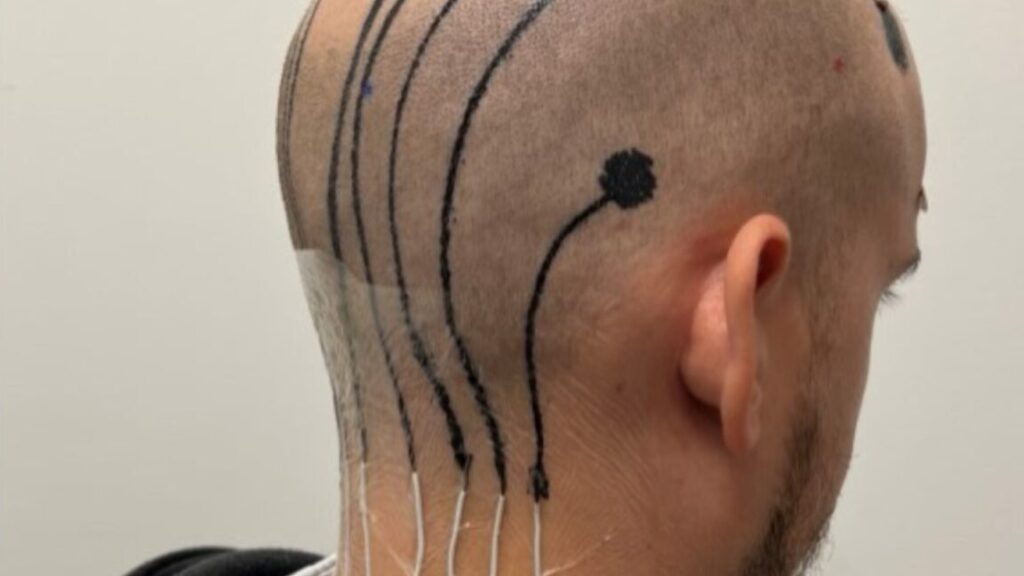
A 3D-printable EEG electrode e-tattoo. Credit: University of Texas at Austin.
Epidermal electronics attached to the skin via temporary tattoos (e-tattoos) have been around for more than a decade, but they have their limitations, most notably that they don’t function well on curved and/or hairy surfaces. Scientists have now developed special conductive inks that can be printed right onto a person’s scalp to measure brain waves, even if they have hair. According to a new paper published in the journal Cell Biomaterials, this could one day enable mobile EEG monitoring outside a clinical setting, among other potential applications.
EEGs are a well-established, non-invasive method for recording the electrical activity of the brain, a crucial diagnostic tool for monitoring such conditions as epilepsy, sleep disorders, and brain injuries. It’s also an important tool in many aspects of neuroscience research, including the ongoing development of brain-computer interfaces (BCIs). But there are issues. Subjects must wear uncomfortable caps that aren’t designed to handle the variation in people’s’ head shapes, so a clinician must painstakingly map out the electrode positions on a given patient’s head—a time-consuming process. And the gel used to apply the electrodes dries out and loses conductivity within a couple of hours, limiting how long one can make recordings.
By contrast, e-tattoos connect to skin without adhesives, are practically unnoticeable, and are typically attached via temporary tattoo, allowing electrical measurements (and other measurements, such as temperature and strain) using ultra-thin polymers with embedded circuit elements. They can measure heartbeats on the chest (ECG), muscle contractions in the leg (EMG), stress levels, and alpha waves through the forehead (EEG), for example.
Ink masters
Yet even e-tattoos have their challenges, such as the aforementioned curved or hairy surfaces, as well as requiring personalized electrode placement design to cover larger areas since biosignals are spatially distributed. So scientists at the University of Texas at Austin and the University of California, Los Angeles, decided to explore the potential of on-tissue printing. Prior work in this area has focused on things like bio-printing hydrogels embedded with cells for tissue regeneration or as strain sensors.
Graphical abstract of on-scalp printing of the EEG e-tattoos.
Credit:
L. Scalco de Vasconcelos et al., 2024
The UTA/UCLA team developed printable biocompatible polymer-based inks that can be applied directly via microjet through short hair onto a lightly moistened scalp. The ink then quickly dries into a soft, stretchable, and conductive, thin film that conforms perfectly to the shape of the scalp. The ink comes in two varieties: one to form electrodes to pick up EEG signals and the other to form highly conductive interconnects that also minimize noise in the readings.